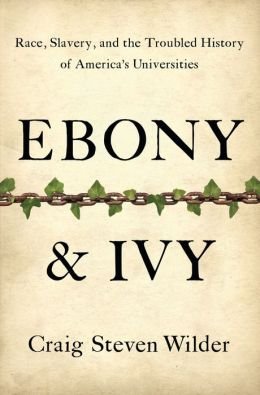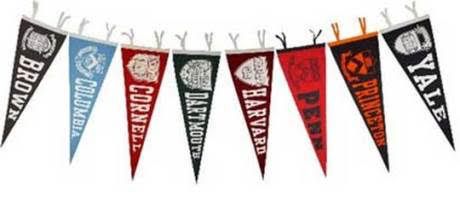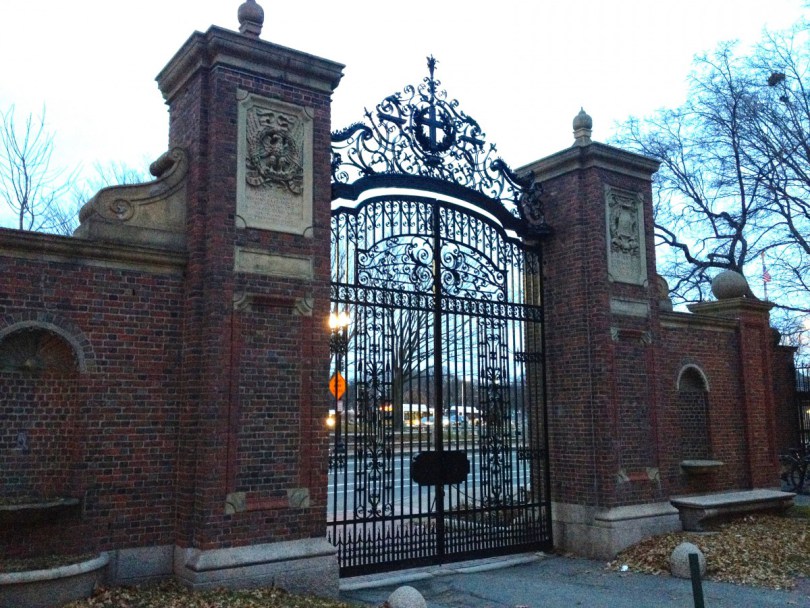

In 2013, Craig Steven Wilder’s book Ebony & Ivy: Race, Slavery, and the Troubled History of America’s Universities was published by Bloomsbury Publishing. Wilder is an MIT professor of American history and has taught at Williams College and Dartmouth College.
Many of America’s revered colleges and universities-from Harvard, Yale, and Princeton to Rutgers, Williams College, and UNC-were soaked in the sweat, the tears, and sometimes the blood of people of color. The earliest academies proclaimed their mission to Christianize the savages of North America, and played a key role in white conquest. Later, the slave economy and higher education grew up together, each nurturing the other. Slavery funded colleges, built campuses, and paid the wages of professors. Enslaved Americans waited on faculty and students; academic leaders aggressively courted the support of slave owners and slave traders. Significantly, as Wilder shows in his book, our leading universities, dependent on human bondage, became breeding grounds for the racist ideas that sustained them.

Book excerpt:
It is difficult to imagine college campuses as sites for exploring the lives of enslaved people in colonial America; however, early campuses were spaces in which faculty and students routinely interacted with slaves. The commoditization of African people through the Atlantic slave trade produced the wealth that subsidized the rise of the colonial academy, and it also supplied laborers who served the students, faculty, and governors of colonial schools. Slaves worked in the houses of many of the presidents and faculty, some students brought slaves to campus as personal servants, unfree people maintained college buildings, and college boys often used enslaved people for entertainment, including boxing and dancing. The historical and archival records reveal quite a bit about the very intimate ways in which enslaved people shaped the day-to-day experience of higher education in colonial America.

Slaves were present at the founding of many colleges—including Yale, Princeton, and Dartmouth. Colonial schools did not live innocently in a world with slavery; slavery on campus was not the mere residue of the larger slave economy. College governors exploited the slave economy to secure the futures of their schools. They recruited students among the wealthy slaveholding families of the South and the West Indies, and carefully supervised and catered to privileged boys from the plantations. They solicited donations in these same regions, and also turned to the Mid-Atlantic and New England slave traders for benefactions.
In the daily routine of a college there was a lot of work to be done, and enslaved people often performed the most labor-intensive tasks. In the mornings, the professors and scholars needed wood for fires, water for washing, and breakfast after morning prayers in the chapel. As students ate, their rooms were cleaned, chamber pots emptied, and beds made. Multiple meals had to be produced every day in the kitchens. Ashes needed to be cleared from fireplaces and stoves, and floors needed sweeping. Clothes and shoes were cleaned and mended. Fires were lighted and maintained.

Johnston Gate, the official entrance to Harvard, built by slaves.
Faculty and officers often testified to the difficult lives of enslaved people, but not always sympathetically. Professor Hugh Jones of William and Mary bitterly demanded that the slaves be segregated, “for these not only take up a great deal of Room and are noisy and nasty, but also have often made me and others apprehensive of the Danger of being burnt with the College thro’ their Carelessness and Drowsiness.”
After the 1764 chartering of the College of Rhode Island, the trustees began soliciting money to prepare the grounds and build an academic hall. The active slaving towns of Providence and Newport housed a number of wealthy merchant families and high proportions of slaveholders. The prosperous slave trader Jacob Rodriguez de Rivera donated ten thousand linear feet of wood during the subscriptions for the first college building. Henry Laurens, another prominent slaver, also contributed supplies. Other residents donated the labor of their slaves. Henry Paget promised Pero, his sixty- two- year- old slave, for about a month. Another local master offered Job, an Indian slave, for more than a week.
A small army of slaves maintained the College of William and Mary. “I promise you the College is very large & well built, with gardens and out houses proportioned,” the proud parent William Gooch wrote to his brother. “The more wealthy scholars had negro boys to wait on them,” adds a historian of the college. In 1754 alone, eight students, including the brothers Charles and Edward Carter, paid fees to house their personal slaves on campus. The college also owned dozens of people.
In 1773 George Washington escorted his stepson, John “Jacky” Custis, and Jacky’s slave, Joe, to New York City. The general had vetoed the idea of placing the young man at William and Mary, fearing that the combination of planter wealth and loose discipline would only aggravate his son’s personal faults. Washington hoped that living in the North would tame Jacky’s penchant for gambling and expensive luxuries. He also wanted to control Jacky’s indecent behavior— womanizing, secret engagements, and having sex with slaves. But King’s College, now Columbia University, was not a place to learn self- discipline. The college outfitted Jacky with a suite of rooms, catered to his every desire, and sent misleading reports on his progress to Mount Vernon. The teenager informed his mother that he was being treated “in a particular Light” because of his status, and that he appreciated the “distinction made between me & the other students.”
Read more of Ebony & Ivy on Kindle and Google Books.
